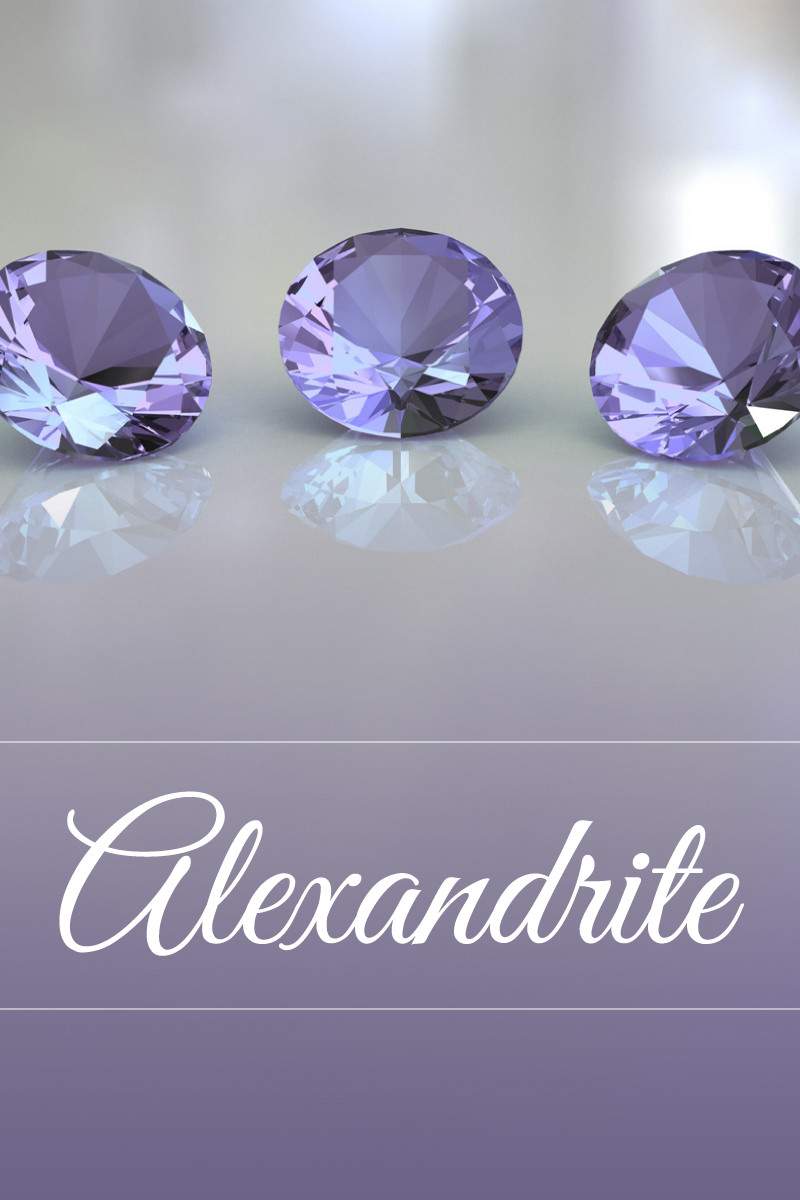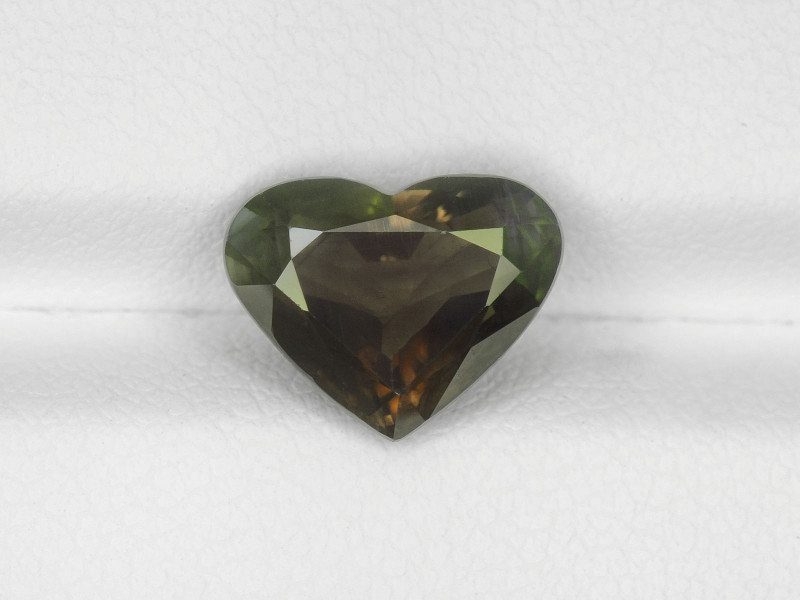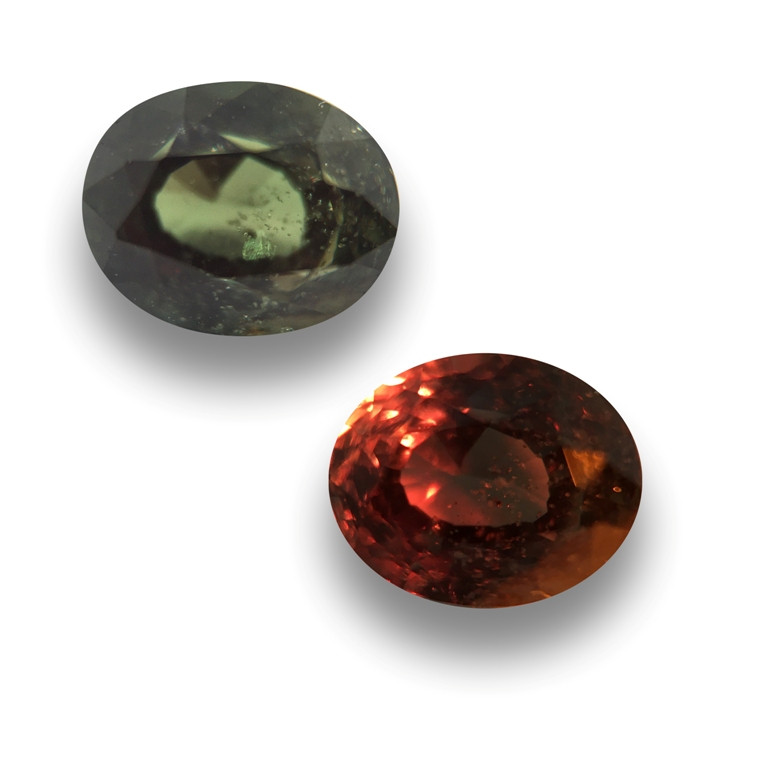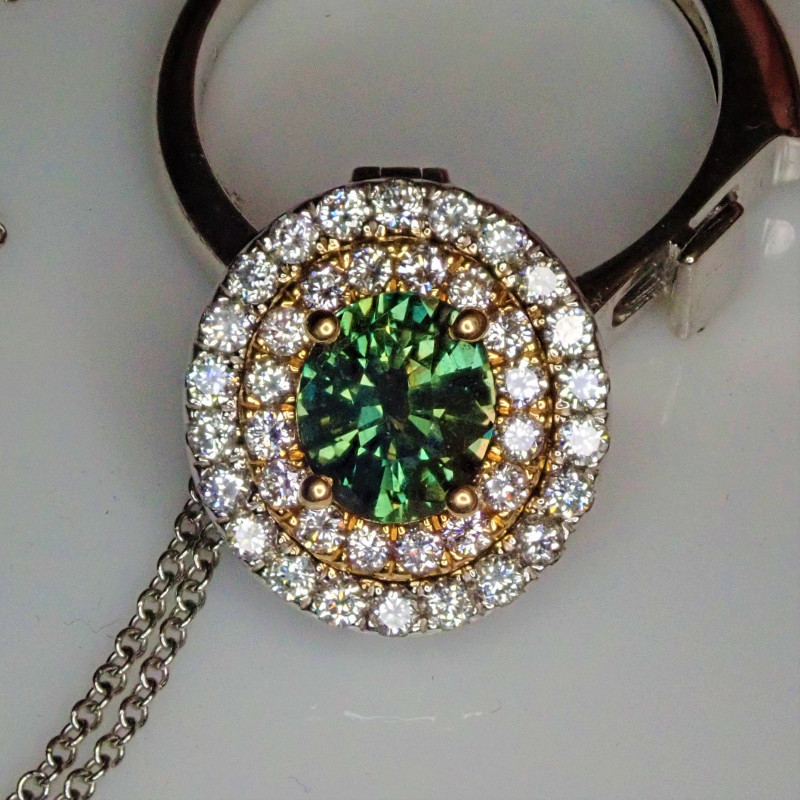Alexandrite Stone: Meaning, History, Properties, and Value
 If you loved color-changing mood rings as a kid, get ready for the upscale, sophisticated adult version: alexandrite stone! Alexandrite is a variety of the gemstone chrysoberyl. Known for its rarity and mesmerizing color-changing ability, this gem might make you wonder if magic really is possible.
If you loved color-changing mood rings as a kid, get ready for the upscale, sophisticated adult version: alexandrite stone! Alexandrite is a variety of the gemstone chrysoberyl. Known for its rarity and mesmerizing color-changing ability, this gem might make you wonder if magic really is possible.
Alexandrite’s roots are in Russia, but the stone is beloved by gem enthusiasts and jewelers worldwide. In fact, alexandrite is one of the rarest gemstones in the world, even rarer than diamonds.
One of the alexandrite’s nicknames is “Emerald by day, ruby by night.” The colors of an alexandrite gem will transport you to a suave holiday party, where sparkling greens and reds abound. However, the stone’s beauty is sure to captivate year-round.
If you’re ready to learn more, join us as we cover all your questions about this beautiful gem, from its dazzling colors to its many healing properties and buying factors.
About Alexandrite Stone
Alexandrite is an elegant gemstone for anybody who wants to feel like royalty. Those born in the month of June are graced with an alexandrite birthstone, along with the traditional pearl. Perhaps unsurprisingly, alexandrite is also the zodiac stone for Gemini.
If you’re a Gemini with a June birthday, why not mix it up with a pearl and alexandrite necklace? Wearing both stones will bring you luck and take your look from everyday to exquisite!
Beyond birthdays, June is known for hosting sunny summer weddings! Besides wearing an alexandrite stone for the occasion, you can also gift one! If you know someone celebrating their 55th wedding anniversary, alexandrite is the traditional gift for commemorating this impressive milestone.

Mineral Characteristics
Alexandrite is a form of chrysoberyl, with only a slight chemical difference. Both stones are made of beryllium, aluminum, and oxygen. When chromium replaces some of the aluminum in chrysoberyl, it becomes alexandrite. Both stones belong to the chrysoberyl species.
Wondering how to identify alexandrite? The simplest method is checking for color change.
Alexandrite stones will appear green or blue-green in sunlight and red or magenta under incandescent light. Alexandrite is one of the few gemstones that can change color, and as the most popular one, color-changing in gems is sometimes called an “alexandrite effect.”
The impressive alexandrite stone properties don’t stop there. At an 8.5 on the Mohs scale of mineral hardness, alexandrite’s durability is only out-ranked by diamond, sapphire, and ruby.
Alexandrite Specifications and Characteristics
Color: Varies by light source; Daylight = green, teal, or brownish yellow; Incandescent light = purple, red, pinkish purple, or yellowish-green
Crystal structure: Orthorhombic
Luster: Vitreous (glass-like)
Transparency: Transparent to opaque
Refractive index: 1.74–1.76
Density: 3.7-3.8
Cleavage: 1 direction; Distinct to poor
Pleochroism: Present; Green, yellow-orange, and red or mauve
Fracture: Weak conchoidal to uneven
Luminescence: Present; Fluorescent type, UV-Long, and UV-Short; Weak red
Chatoyancy: Can be present, but very rare
Alright, we’ve got a handle on the mineral aspects, but what does alexandrite symbolize?
Alexandrite Meaning
Often called the “Chameleon Stone,” alexandrite’s symbolism is as diverse as its hues. Alexandrite most commonly represents wisdom and good luck. However, the complementary colors on the alexandrite’s surface take its meaning a bit deeper.
Anyone familiar with the basics of color theory knows that red and green are opposite on the color wheel, or “complementary.” Besides making each other pop, the two colors’ individual symbolism together creates a dynamic duo.
The passion, energy, and sensuality of red seem to contradict the peaceful, growth-oriented green. However, embracing both sides of the spectrum — or color wheel — can introduce spontaneity and innovation to all aspects of life.
Among various cultures, what is the spiritual meaning of alexandrite?
In Russia, alexandrite represents personal pride and prestige. The spiritual meaning was taken very seriously, with Czar Alexander II (the stone’s namesake) allegedly wearing an alexandrite ring daily as a talisman.
Various cultures purport that alexandrite changes colors to warn its wearer of danger. Chinese interpretations connect alexandrite to blood, believing the stone could make the circulatory system work better. Taking a cue from the Greek’s view on amethyst, Hindus saw alexandrite as a cure for drunkenness.
Speaking of cures, what are the metaphysical properties of alexandrite?

Alexandrite Healing Properties
Given alexandrite’s dual nature, it may come as no surprise that many of its healing properties are about balance. Spiritually, the gem can help us balance the wellbeing of our body along with our soul. Moreover, alexandrite reminds us that all things in nature work together.
Alexandrite’s mental healing properties include helping us find centeredness and enjoy the world around us. By enabling us to accept that change is a part of life, alexandrite can bring healing and mindfulness to our daily routine.
In terms of physical health, alexandrite stone benefits the entire body by helping to regulate the circulatory system. Specifically, alexandrite is often used for problems with inflammation, cramps, and tension.
Back to the spiritual side, what is alexandrite used for in chakra healing?
Alexandrite stones help open and balance the crown chakra. The crown is the highest of the seven chakras, culminating the journey from our basic physical needs to our highest spiritual self.
With a blocked crown chakra, you may feel disconnected and uninspired, drifting aimlessly without an anchor. Alexandrite can open the chakra, infusing warm energies into your life and setting the stage for a powerful spiritual transformation.
Before you start using alexandrite for healing, you’ll want to find the right one. Let’s discuss what goes into an alexandrite stone’s value and what to look for as a buyer.
Alexandrite Gemstone Properties
A gemstone’s properties are essential for determining its true value. Depending on the stone, certain factors carry more weight than others. For instance, clarity plays a bigger role in colorless stones like diamonds while color saturation is more important for colored stones.
With alexandrite, the value factors are color, clarity, and cut.
Color
Color is one of alexandrite’s most well-known attributes and a huge factor for the stone’s quality grade. The purest forms of alexandrite, nearly impossible to find outside of Russia, are emerald green in sunlight and deep reddish-purple in incandescent light.
Alexandrite stone can appear in slightly different colors, too. Some may look yellow or peach-colored instead of green and change to hot pink instead of red. Different light sources, such as fluorescent or LED, can produce an array of shades on alexandrite’s surface.
Of course, the intensity of the stone’s color shift plays a role as well. Given as a percentage, the degree of color change can go from 5% to 100%. Mid-grade stones will usually fall around 50-60%, while top-quality ones will have 80-100% intensity.

Clarity
A gemstone’s clarity, or how transparent it appears, is determined by the number of inclusions inside the stone. For alexandrite, clarity isn’t the most important factor, but it does play a role.
Unlike diamonds, colored stones don’t have an official clarity grading system. However, an unofficial grading system was created for determining clarity in colored gems.
Alexandrite stones almost always emerge from the ground with a few visible inclusions. Therefore, alexandrite falls under the Type II clarity grade.
Cut & Carat Weight
Cut doesn’t affect alexandrite’s value as much as it does for other stones. However, alexandrite’s carat weight does play an important role and often determines the cut.
As you know, natural alexandrite is exceedingly rare. Mining gem-quality alexandrite stones these days can be challenging, but finding specimens larger than a few carats is nearly impossible. For this reason, many of the stones mined become cabochons instead of faceted pieces.
Luckily, scientists have found numerous methods for creating synthetic alexandrite that can be faceted into rings, pendants, and more. The first synthetic alexandrite method, the flux method, was patented in California in 1973.
Speaking of history, let’s dive into the legends and lore that surround alexandrite stone.

Alexandrite History
The story behind the discovery and naming of alexandrite is filled with controversy. The origin story takes place in Russia, and the central characters include a Finnish mineralogist, a Russian mineralogist, and the Russian Ural Mine manager.
Let’s start with the name. Alexandrite unequivocally gets its name from Czar Alexander II of Russia. (Ever heard of Anastasia Romanov? Alexander II was her great-grandfather).
When the stone was discovered in Russia's Ural Mountains in 1834, Alexander II wasn’t czar yet, but he was coming up on his 16th birthday. He wasn’t Czar yet, but he would be of age by 16. Alexandrite matched the two military colors of Russia at the time, so the name made perfect sense.
The facts get murky when it comes to who discovered alexandrite and named it first.
One story goes that Finnish mineralogist Nils Gustaf Nordenskiöld was the first to identify the stone after looking at samples from the Uralian mine. Nordenskiöld got the samples from Russian mineralogist Count L.A. Perovskii, who had initially misidentified the specimens.
Most historians say Perovskii coined alexandrite’s name. However, some claim that Nordenskiöld suggested the name first. Regardless, Perovskii allegedly presented the new gem to Alexander II at his birthday celebration on April 17th, 1834.
The other possible origin story comes from historian Richard A. Wise. Wise claims that the Ural Mine manager, Vasilevich Kokovin, discovered and identified alexandrite first. However, Kokovin was later accused of stealing royal jewels, although there was no evidence. The accusation may have led to Kokovin’s erasure from alexandrite’s history.
Interestingly, an earlier discovery may have happened in Germany. Mineralogy professor Gustav Rose wrote about a new chrysoberyl variety in 1829 that matched alexandrite.
Moving beyond its rich history, how is alexandrite formed?

Alexandrite Origins and Sources
Alexandrite stones grow in quite a few geological areas, including pegmatites, stream pebbles, and dolomitic marbles to name a few. However, the mines where alexandrite can be found are few and far between.
We’ve discussed alexandrite’s scarcity, but how rare is alexandrite exactly? To answer that question, we need to look at the conditions required for creating alexandrite.
Alexandrite can form in places where beryllium and chromium are present. Finding beryllium and chromium in the same place is almost as hard as finding any beryllium at all, as it's one of the rarest elements.
We know the proper conditions existed in the USSR. But beyond Russia, where does alexandrite come from?
Mining Locations
For nearly a century, Russia was the only place to find natural alexandrite. However, in about 30 years, the mines were nearly used up.
In the 1980s, Brazilian mines uncovered their own alexandrite stones. Soon, other nations found the stone as well, including:
Madagascar
Sri Lanka
Zimbabwe
Myanmar
While no country can compare to Russian alexandrite in terms of saturation, other nations’ mines are known for their specimens’ varying colors. Brazil’s alexandrite stones are typically paler in color, and some Brazilian specimens contain traces of gallium in place of aluminum.

Sri Lankan alexandrite is known for a rich, olive green shade in daylight, while Zimbabwe’s stones have intense color-changing abilities and emerald green daylight hues.
Where an alexandrite stone comes from can even affect the stone’s price.
Alexandrite Gemstone Value and Prices
If you’ve seen what alexandrite costs, you may wonder: why is alexandrite so expensive?
Alexandrite’s value is determined by numerous factors such as where it was mined, how big it is, and how good the clarity is. The two most important factors for alexandrite price are the color quality and the intensity of its color change, given as a percentage.
Mid-level alexandrite may also have more brown in its coloring and less saturated hues overall. Top-quality gems have vivid colors, like Russia’s specimens. In fact, high-quality alexandrite stones from Russia or Brazil can cost twice as much as the same quality stones from elsewhere.
If you recall, the mid-level quality color change is about 50-60% or higher, while top-level quality falls at 80-100%. Low-level quality alexandrites have a color change below 50%; These gems often look yellow-green in daylight and mahogany under incandescent light.
Carat weight is another price determiner. Retail prices for 1-carat alexandrite can range from $500-$20,000 per carat. The highest quality specimens under 1ct are typically more than $15,000 per carat.
Alexandrite heavier than 0.25cts is already rare, so any stones over 1ct will cost between $50,000 to $70,000 per carat. Good-quality alexandrite above five carats is even rarer, costing in the hundreds of thousands.
Low-quality stones are usually less than $2,000 per carat, while mid-quality stones range from $7,000 to $12,000 per carat. One budget-friendly tip is to opt for a small alexandrite stone with a decent color change.
With that kind of investment, you’ll want to take every precaution you can for ensuring your gem’s longevity.

Care and Maintenance
Alexandrite has impressive durability, but the stone is sadly not invincible.
To ensure your stone lasts a lifetime and longer, avoid exposing it to:
Extreme heat (regular heat is okay)
Hard strikes
Large amounts of household cleaning products
Luckily, cleaning alexandrite is a breeze. The traditional soap and warm water route will work just fine, but it’s okay to use mechanical cleaners as well. The only time you should avoid using mechanical cleaners is if the stone is fracture-filled.
Let Your Colors Shine With Alexandrite!
That covers everything you need to know about alexandrite! This stone may be hard to come by, but that only makes each one more special.
Alexandrite reminds us that we don’t have to limit ourselves. If this sophisticated gem is happy to go from passionate reds to peaceful blues, we can be confident in pursuing any ambition!
Take it from destiny coach Anthon St. Maarten: “Just focus on the possibilities. The limitations will take care of itself.”
Embrace a world of possibilities with an alexandrite stone today!
Was this article helpful?
3 people found this article helpful
Steve Thomas
- Written - 22nd Aug 2021
- Edited - 31st Aug 2023
Comments

















